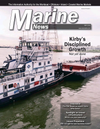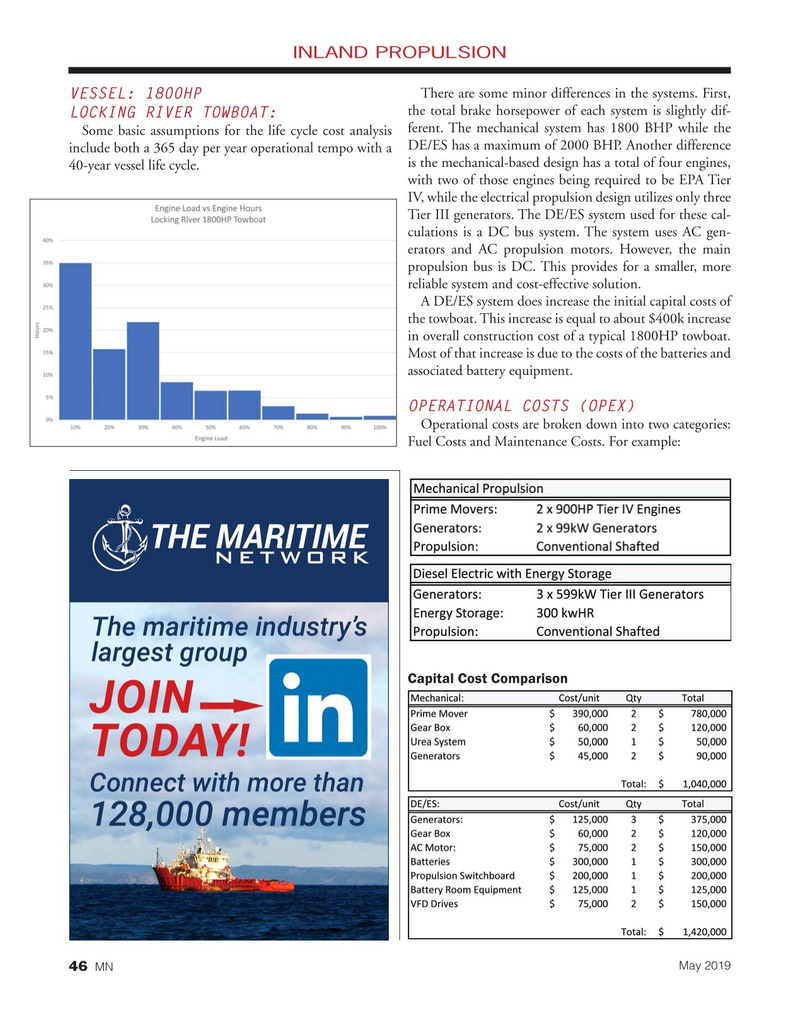
Page 46: of Marine News Magazine (May 2019)
Inland Waterways
Read this page in Pdf, Flash or Html5 edition of May 2019 Marine News Magazine
INLAND PROPULSION
There are some minor differences in the systems. First,
VESSEL: 1800HP the total brake horsepower of each system is slightly dif-
LOCKING RIVER TOWBOAT:
Some basic assumptions for the life cycle cost analysis ferent. The mechanical system has 1800 BHP while the include both a 365 day per year operational tempo with a DE/ES has a maximum of 2000 BHP. Another difference is the mechanical-based design has a total of four engines, 40-year vessel life cycle.
with two of those engines being required to be EPA Tier
IV, while the electrical propulsion design utilizes only three
Tier III generators. The DE/ES system used for these cal- culations is a DC bus system. The system uses AC gen- erators and AC propulsion motors. However, the main propulsion bus is DC. This provides for a smaller, more reliable system and cost-effective solution.
A DE/ES system does increase the initial capital costs of the towboat. This increase is equal to about $400k increase in overall construction cost of a typical 1800HP towboat.
Most of that increase is due to the costs of the batteries and associated battery equipment.
OPERATIONAL COSTS (OPEX)
Operational costs are broken down into two categories:
Fuel Costs and Maintenance Costs. For example:
Capital Cost Comparison
May 2019 46 MN

 45
45

 47
47
